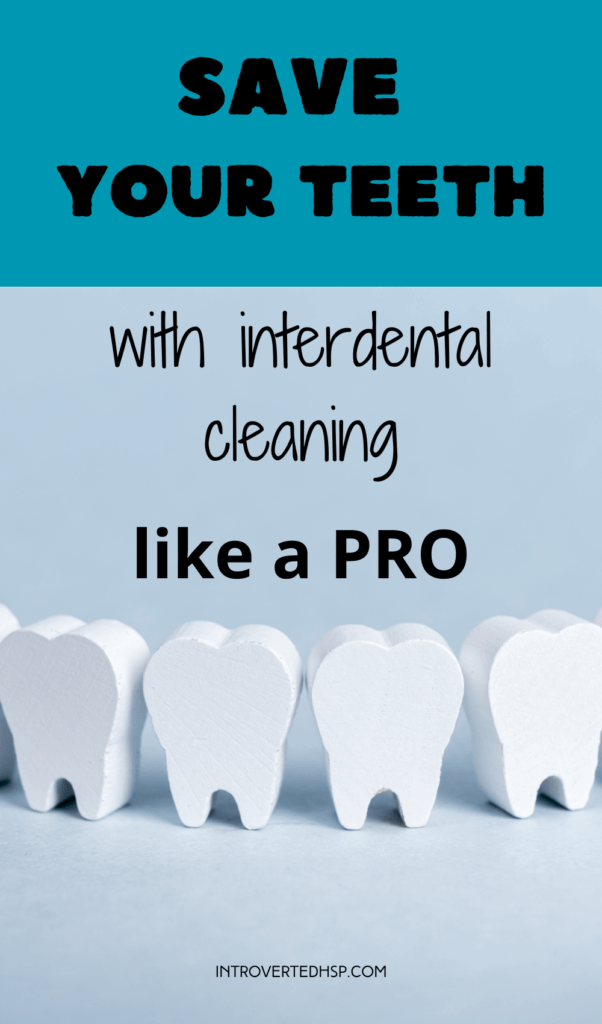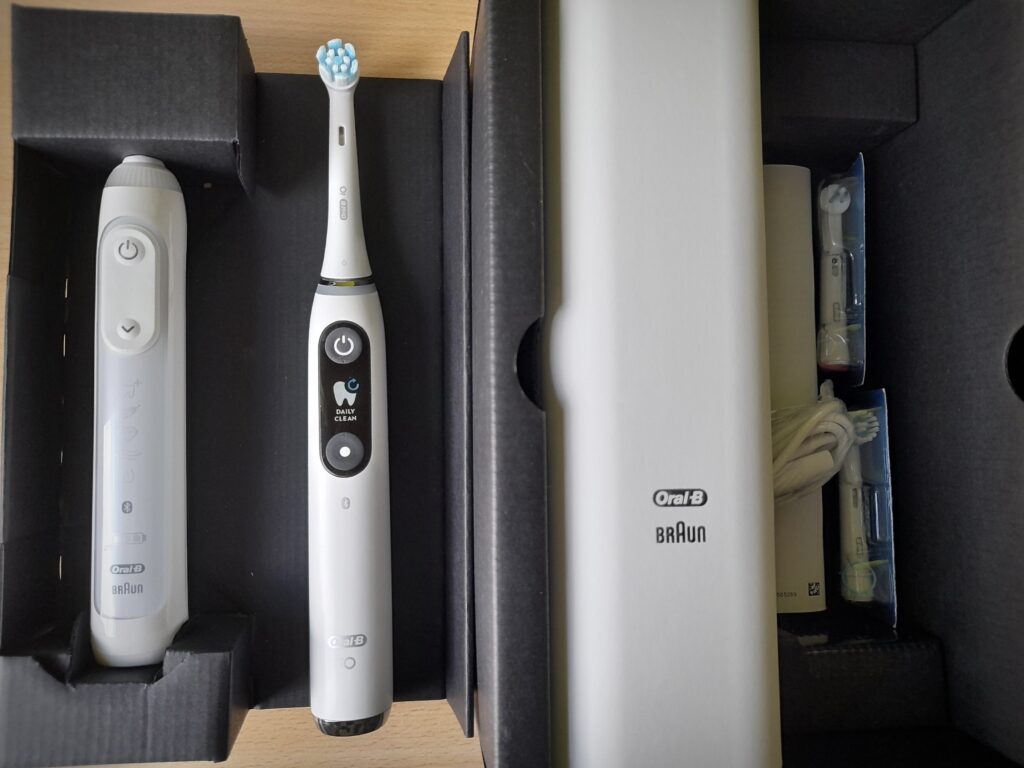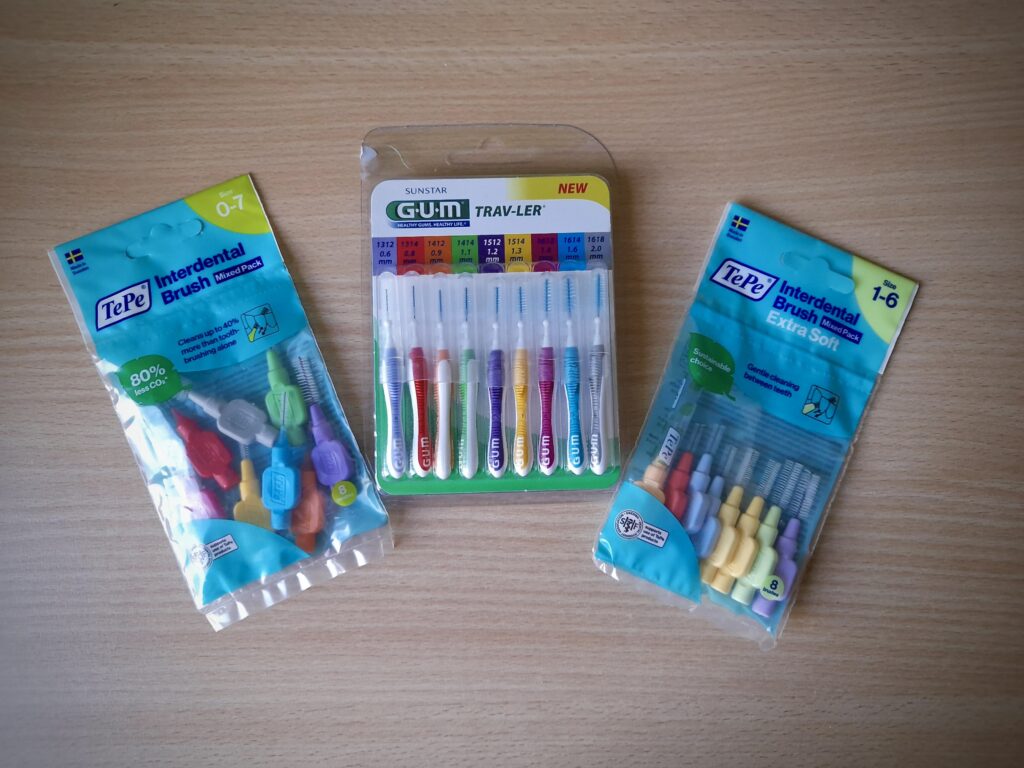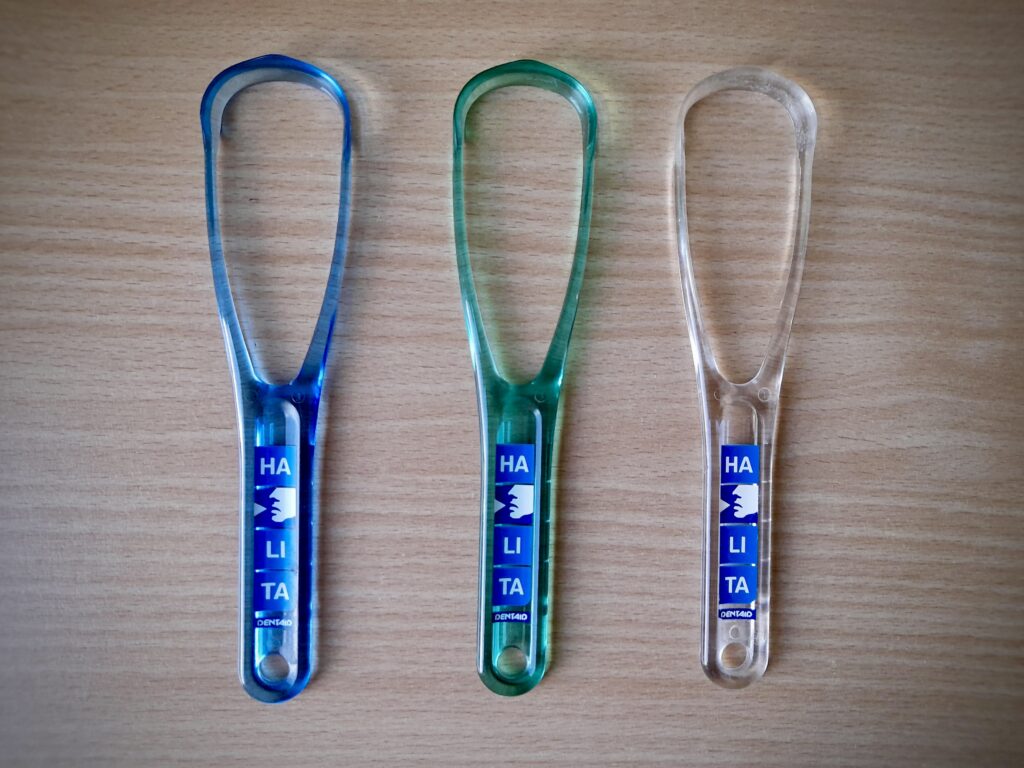Have you heard of interdental cleaning before? Are you actually doing it though?
Having a good oral hygiëne is so important for your entire quality of life!
When you get older, you will want your own set of teeth to chew your food properly and enjoy your meal without having a toothache.
First, let’s talk a bit about brushing your teeth.

This post may contain affiliate links, which means if you make a purchase through these links, I may receive a small commission at no extra cost to you. As an Amazon Associate I earn from qualifying purchases. Please read my disclosure for more info.
Brushing your teeth

Brushing your teeth with a toothbrush twice a day is what is recommended by many dentists.
I think the saying ‘you brush your teeth in the morning to keep your friends and in the evening to keep your teeth ‘ explains why you do this.
Morning
When you wake up from a good night’s sleep, most people have smelly breath, which is also called halitosis. This is totally normal because you have a dry mouth when you wake up. Your mouth is more dry in the morning because there is less saliva production at night. The bacteria that live in your mouth can produce a smelly gas and because there is less saliva to capture the gas, you can smell it. The smell can be fixed by drinking or eating something but your teeth prefer a good brushing as well.
It is recommended to brush for two minutes twice a day with an electric toothbrush as they proved to be more effective in removing plaque. It doesn’t have to be the most expensive electric toothbrush to do a good job! Just pick one with a round head because it is easier to get at most places than a long one, this is a good basic electric toothbrush for example.
Make sure to do this before breakfast or wait for at least 30 minutes to brush your teeth. Why is that? Well, because when you eat or drink something with more acidity than water, the outer layer of your teeth will lose part of its integrity. When you stop eating or drinking, the teeth try to recover from this sour attack and can do this at least for some part when you give them enough time. They need at least 30 minutes to two hours to get back to where they came from.
Evening
Brush in the evening and make your teeth all clean before you enter your bed. This is the most important time of the day to brush your teeth. Because there is less saliva in your mouth while sleeping, your teeth are more prone to develop cavities.
The evening is also a great time for interdental cleaning! You could clean in between your teeth twice a day, and you should if you have periodontitis. But I’m always happy if people do it once a day.
Interdental Cleaning
So more about cleaning in between your teeth now! When you don’t clean in between your teeth with something else than a regular toothbrush, you’re skipping a lot of the surface of your teeth when cleaning. It doesn’t matter when you do it, as long as you do it at least once a day. I prefer to floss after I brush my teeth because the fluoride from the toothpaste can get in between my teeth and there is less food to clean out with my string.
There are so many different types of interdental cleaning tools on the market. I will give you some advice, but make sure to ask your regular dentist which type of interdental cleaning is best for your mouth! This is so specific for every individual.
Also, in my opinion, it doesn’t matter which brand you buy your supplies from. The most important thing to watch for with interdental brushes is the diameter! This should be right for you.
Dental Floss

So first, there is dental floss. There are many types of dental floss for sale but they all do the same thing. You only need a string of floss about the underarm’s length long and the right technique. When you do it the wrong way, you will only end up hurting your gums.
Floss technique
Start with fixating the floss between two fingers so you have a tight piece of string. Then saw it above and over the contact point of your teeth and go all the way down until you are a bit under your gums. Yes, that’s right! Floss a little bit under your gums.
Hug your teeth with the string one at a time moving the string from underneath the gums and going back up. When there is plaque, you can see it coming up and remove it from your teeth.
From the moment where there is calculus build-up, this is hardened plaque, you can’t remove it anymore at home. Try to beat the calculus by removing the plaque correctly every single day!
Check out this video on YouTube to help you understand it better.
Here is also a video about using floss picks since they become more and more popular.
Who should use floss?
- If you have small spaces in between your teeth, flossing is probably right for you
- When there is no room in between your teeth to fit an interdental brush
- When you want to prevent cavities in between your teeth
- To keep your gums healthy and prevent infection and inflammation
- Everyone could floss and benefit from it! This is the only interdental cleaning technique that cleans the point where two teeth touch each other and thus can prevent cavities over there
Interdental brushes

Interdental brushes are small brushes with little hairs on them. They come in a lot of different sizes. These brushes are the best for when you have periodontitis! You could use these brushes up until one week but be sure to replace them when they start to bend and lose their hair.
I think everyone knows what cavities are, but if you want me to write a blog post about gingivitis and periodontitis, please let me know in the comments.
Interdental brush technique
The interdental brush technique is different than the floss technique. Make sure to get it right to reap the benefits of it.
First, place the interdental brush between your teeth under the point where the teeth have contact and toward the gums. Push it as far in between as you get and start moving the brush diagonally. Cleaning the surface of one tooth and then the other afterward by brushing/sliding the brush against it at least 5 times on every surface.
When you’ve cleaned the interdental space, the teeth, and the gums, you can pull out your interdental brush and rinse it off for the next space.
Some people need multiple different sizes because the space in between their teeth varies in their mouth. This is especially important if you have periodontitis. Otherwise, you could try getting one size brush that fits everywhere but really slides against the teeth to get all the plaque.
How to know when the fit is good? You should feel a little resistance. The bigger the better but you have to be able to get it in between your teeth.
Check out this video on YouTube to help you understand it better.
Who should use interdental brushes?
- When you are having trouble using floss because the technique is too complicated
- As extra cleaning for your gum health
- When you have periodontitis
- When you have larger spaces in between your teeth
Other ways of interdental cleaning
Gum picks

Gum picks are actually rubber toothpicks. U can use them in the exact same way as the interdental toothbrushes, only they are more for one-time use.
Wooden toothpick
Wooden toothpicks are good for when you don’t have a lot of space in between your teeth and you have difficulty flossing the right way.
Water flosser
This tool is good to use as an extra aid, but don’t solitarily rely on it to clean everything. The bacteria and the plaque really stick to your teeth so you will need manual labor from interdental brushes or floss to get them all clean.
Here’s a video on how you can use the water flosser correctly.
BONUS POINTS for using a tongue scraper

Tongue scraper technique
Stick out your tongue as far as you can. It can help to hold it with gauze if it slips away. Put the scraper as far back as you can and put it on your tongue. Then move it forward, while scraping off a whole lot of bacterial residue. You can repeat this until the tongue looks clean and pink.
Who should use a tongue scraper?
Everybody who wants to have a nicer breath!
Bad breath usually comes from the bacteria on the tongue so cleaning your tongue is the first step to improving your breath.
I’m a fan of the scraper from Halita, I use this one myself. I only use the part with the curve in it because I feel like the other side is too sharp.
When you have bad breath, it is recommended to do it at least daily.
KEEP THOSE PEARLY WHITES CLEAN Y’ALL
If you have some specific dental topics that you want to learn more about, please let me know in the comments!
When you have any dental questions, I also recommend Teeth Talk Girl on YouTube. She’s very informative and also fun to watch.
You really are doing your teeth a big favor if you can do this interdental cleaning once a day, so really try to make it a habit! And don’t forget your teeth in the back ;).
